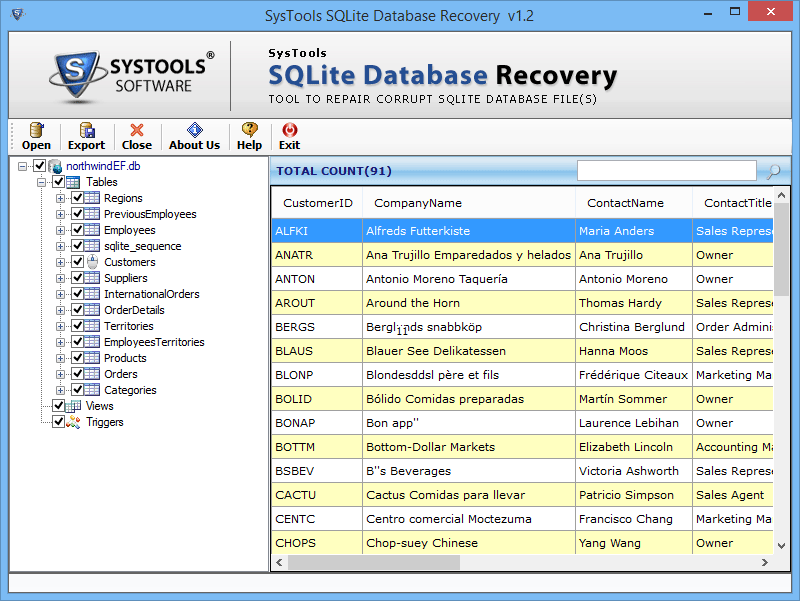


While a column can have a declared type, internally it only has a type affinity. In SQLite, columns don’t have types or domains.

These types were introduced in SQLite to maximize the compatibility between SQLite and other database management systems. However, you still can store any type of data as you wish these types are recommended but not required. In SQLite, type affinity is used to store the values within a column, and the declared type of column determines the type affinity of a column. Type affinity determines the storage class. For example, it holds value like x the notation x'9856ABCD' represents a 4-byte BLOB. The maximum BLOB value in SQLite is unlimited. BLOB (Binary Large Object) data is any kind of data. Literal BLOBs are represented as hexadecimal text strings preceded by an x. For example, it holds values like ‘abc’, ‘65xyz’, etc.Ī BLOB value is variable-length raw bytes. The maximum string value in SQLite is unlimited. Text values are represented as characters enclosed within single quotes. Text values are variable-length character data. SQLite uses 8-byte floats to store real numbers.
Sqlite data types series#
Floating-point numbers are represented by any bare series of numeric digits that include a decimal point or exponent. For example, it holds value like 6, 56985, -655656, etc.Ī floating-point number, stored as an 8-byte value that contains a decimal point or exponent. They can vary in size: 1, 2, 3, 4, 6, or 8 bytes. The value is a signed integer numbers (8-byte length). It is represented by the NULL keyword and it only holds NULL. Following are the 5 storage classes that are supported by SQLiteĪ NULL is considered its own distinct type. SQLite support 5 concrete data type which is also known as storage classes. This means it allows nearly any element of any row to hold almost any type of value. SQLite uses a dynamic typing technique also known as Manifest Typing. This means that the column can only hold a value that is compatible with columns defined type. Most databases use strong, static column type for tables. The data type defines what type of data can be stored in a column of a table. In SQLite, each table in a database has a data type and name.
Sqlite data types how to#
If the declared type contains the string "INT" then it is assigned INTEGER affinity.Here we will learn SQLite data types with examples and how to use data types (null, integer, text, real, blob, boolean, date and time) in sqlite databases with examples. The affinity of a column is determined by the declared type of the column, according to the following rules in the order shown: And SQLite attempts to coerce values into the declared datatype of the column when it can.)Īlso see Datatypes in SQLite Version 3 and Type Affinity: (There are some exceptions to this rule: An INTEGER PRIMARY KEY column may only store integers.

SQLite thus allows the user to store any value of any datatype into any column regardless of the declared type of that column. In manifest typing, the datatype is a property of the value itself, not of the column in which the value is stored. SQLite relaxes this restriction by using manifest typing. A datatype is associated with each column in a table and only values of that particular datatype are allowed to be stored in that column. Most SQL database engines use static typing. See Manifest Typing in the "differences" documentation. Basically, it accepts the standard SQL syntax but otherwise ignores it. SQLite "mock implements" data-types on columns.


 0 kommentar(er)
0 kommentar(er)
